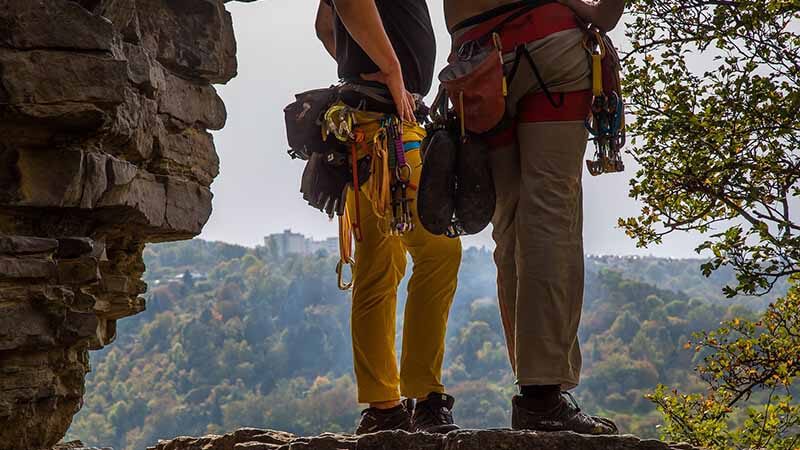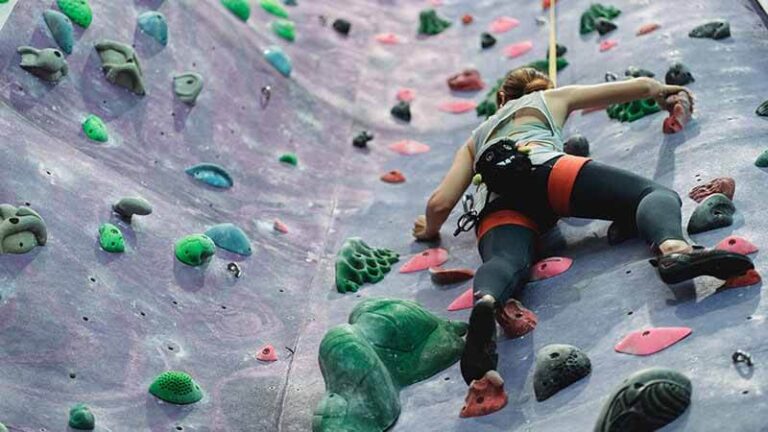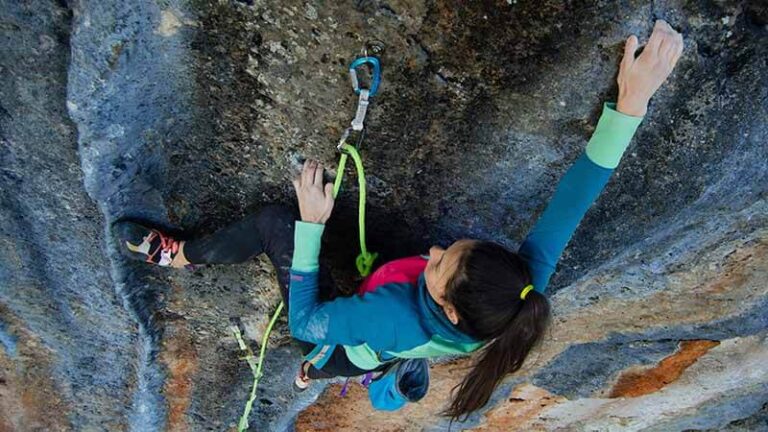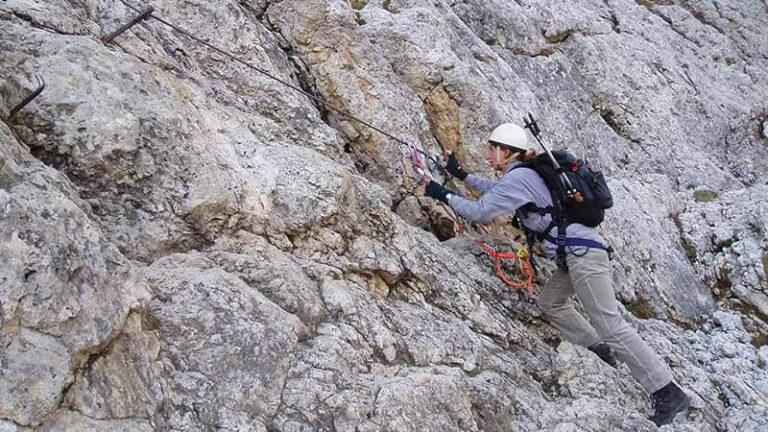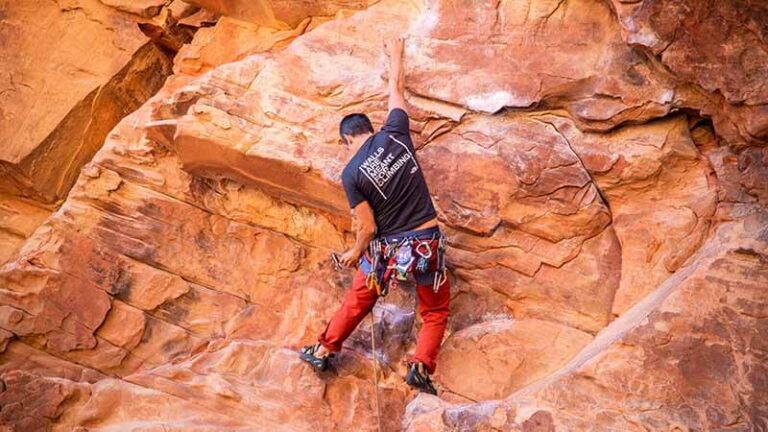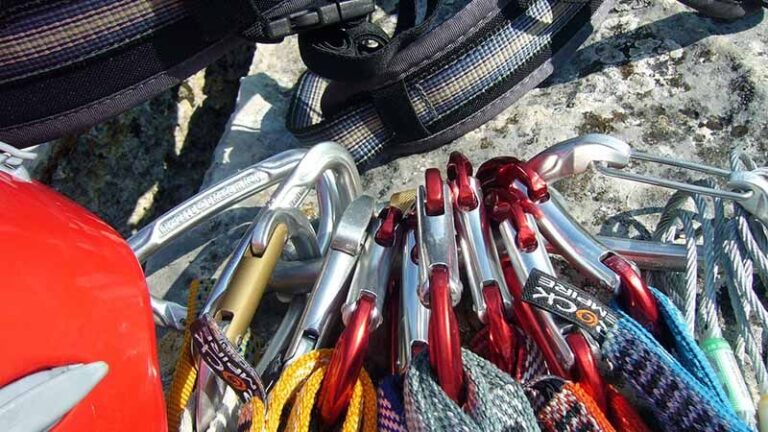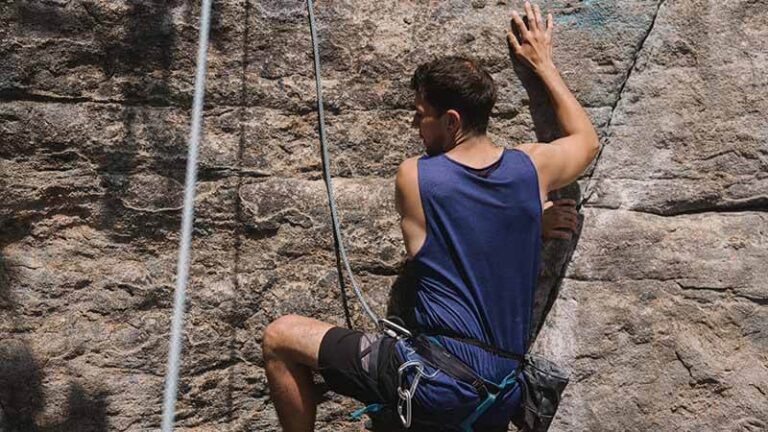How Does Friction Affect Rock Climbing?
Friction is the force that opposes motion between two in contact surfaces. Friction is essential in rock climbing because it allows climbers to ascend or descend on the rock surface. Climbers use force to hold the rock, regulate their emotions, and avoid slipping. Climbers require friction to perform techniques such as smearing, edging, and flagging.
The climber’s weight exerts a force on the rock surface, which response by exerting an equal and opposite force on the climber’s feet or hands. Friction is the name given to this force. The level of friction is determined by the texture and type of rock surface, the rubber, and the design of the climber’s shoes, as well as the climbing method and body position employed. Understanding these variables and how they affect friction can have a big impact on a climber’s performance.
Importance of understanding friction for climbers
The significance of friction for climbers cannot be emphasized. Friction is crucial in determining whether a climber succeeds or fails. Poor technique, the higher danger of slipping and falling, trouble completing routes or movements, and increased tiredness and stress on the body can all result from a lack of understanding of friction.
Climbers who understand friction thoroughly can improve their grip on the rock surface, save energy, and lower their risk of injury. Climbers can improve their performance by increasing friction with tactics like smearing, edging, and flagging. Climbers who understand the effect of rock type and shoe design on friction can also make informed selections when selecting climbing shoes and routes.
Types of friction in rock climbing
Climbers encounter three types of friction during rock climbing: static friction, kinetic friction, and rolling friction.
Static Friction
Static friction is the frictional force that keeps two objects at rest from sliding against each other. Static friction is the force that permits climbers to remain on the rock surface without sliding. When a climber rests their foot or hand on a rock surface, static friction between the climber’s shoe or writing and the rock surface keeps them in place. Static friction is frequently referred to as “stiction.”
Kinetic Friction
The frictional force that resists the movement of two objects sliding against each other is known as kinetic friction. Kinetic friction in rock climbing refers to the force that opposes the movement of a climber’s foot or hand as it slides against the rock surface. When climbers are moving dynamically or completing a move that involves momentum, kinetic friction is critical. If a climber slips while completing a dynamic move, the force of kinetic friction will help decrease the climber’s movement and prevent the climber from falling.
Rolling Friction
The frictional force that opposes the rolling motion of two objects in contact is known as rolling friction. Rolling friction can occur in rock climbing when a climber’s foot or hand rolls across the surface of the rock. Climbers who need to move swiftly over a somewhat smooth rock surface can benefit from rolling friction. Rolling friction, on the other hand, can reduce a climber’s grip on the rock surface and increase the chance of slipping on rougher surfaces.
Understanding the various types of friction in rock climbing can aid climbers in developing tactics and selecting proper gear. Climbers who understand static and kinetic friction can use tactics like smearing and edging to improve their grip on the rock surface.
Climbers who understand the influence of rolling friction can make more informed judgments about their footwear and the type of rock they climb on. Climbers must understand the various types of friction in rock climbing in order to enhance their performance and safety on the rock.
Factors that affect friction in rock climbing
Several factors can affect friction in rock climbing, including the texture and kind of rock, climbing shoe rubber and design, climbing style, and body position.
Texture and type of rock
The texture and type of rock can have a considerable impact on friction when rock climbing. Smoother rock surfaces, such as sandstone, have less friction than rougher surfaces, such as granite. The texture of the rock might also change depending on the weather. Because water reduces the force of static friction, wet rock surfaces have less friction than dry surfaces.
Climbing shoe rubber and design
The rubber and design of climbing shoes can have a considerable impact on friction in rock climbing. Climbing shoes are made with a special rubber that gives the necessary grip on the rock surface. The stickier the rubber, the better the friction of the shoe. Climbing shoes can also be designed with different soles, such as a flat sole for smearing or a curved sole for edging. The shoe’s design can influence the surface area of the shoe in contact with the rock, which might affect friction.
Climbing technique and body position
Climbing technique and body position are important aspects of rock climbing that can affect friction. The smearing technique, for example, includes placing the sole of the climbing shoe flat on the rock surface to maximize friction. The edging technique, on the other hand, includes gripping the rock with the shoe’s edge. The climber’s body position, such as keeping the center of gravity over the feet to maximize friction, can also affect friction.
Techniques for maximizing friction in rock climbing
Climbers can utilize a variety of tactics to optimize friction and increase their grip on the rock surface when rock climbs. Smearing, edging, and flagging are examples of these methods.
Smearing
Smearing is a technique in which the sole of the climbing shoe is placed flat on the rock surface to increase friction. This method is most typically utilized on smooth rock surfaces with no visible handholds or footholds. Climbers can increase the force of static friction by smearing the shoe and expanding the surface area in contact with the rock surface. Smearing is an especially useful method for climbing slabs or high faces.
Edging
Edging is a climbing technique that involves gripping the rock surface with the edge of the climbing shoe. This method is especially beneficial when climbing on edges or with limited footholds. The climber presses the edge of the shoe against the edge or foothold, creating a force perpendicular to the rock surface and increasing the amount of static friction. Climbers can use this technique to improve their grip and balance on narrow footholds or edges.
Flagging
Flagging is a method in which the climber’s body is used to enhance friction on one side while decreasing friction on the other. This method is widely employed by climbers who need to shift their weight to one side while remaining balanced. If the climber wants to shift to the right, for example, they can extend their left leg out to the side, creating friction on the left side and allowing them to keep their balance and hold onto the rock surface.
Consequences of poor friction in rock climbing
Poor friction in rock climbing can have serious repercussions for climbers, such as greater slipping and falling risks, difficulties completing routes or moves, and increased tiredness and stress on the body.
Increased risk of slipping and falling
Climbers are more prone to slide and lose their hold on the rock surface when friction is inadequate, which can result in a fall. Falling from a great height can result in serious injuries such as shattered bones, head injuries, and spinal injuries. The risk of falling increases if the climber is tired or psychologically drained, making it even more important for climbers to maintain appropriate friction to reduce their risk of damage.
Difficulty completing routes or moves
Poor friction can also make it difficult for climbers to finish routes or moves, especially when trying demanding climbs. Climbers rely on friction to keep their grasp on the rock and perform precise movements. Climbers may find it difficult to complete the needed movements if the friction is insufficient, increasing the likelihood of failure.
Increased fatigue and stress on the body
Climbers may need to apply more energy to maintain their hold on the rock surface when friction is low, resulting in increased tiredness and stress on the body. This added strain might increase the likelihood of injury, especially in the hands, fingers, and forearms. Fatigue can also have an effect on a climber’s mental condition, making key judgments more difficult and raising the chance of an accident.
Conclusion
Friction is important in rock climbing, and climbers must understand the many types of friction and how to utilize it in order to perform at their best. Understanding the factors that affect friction, such as rock type, climbing shoe rubber, and climbing method, can assist climbers in selecting the proper tactics to optimize friction while minimizing the danger of damage.
Climbers can keep their grip on the rock surface and make precise movements by using techniques such as smearing, edging, and flagging, resulting in effective climbing experiences.
Climbing is a demanding and rewarding sport that necessitates ongoing skill and knowledge growth. Climbers who continue to improve their skills and awareness of friction can perform better and stay safer on the rock.
Climbers can accomplish this by practicing their techniques, learning from experienced climbers, and remaining current on climbing equipment and technology. Climbers can improve their grip, technique, and overall performance with devotion and practice, resulting in a more fun and successful climbing experience.

